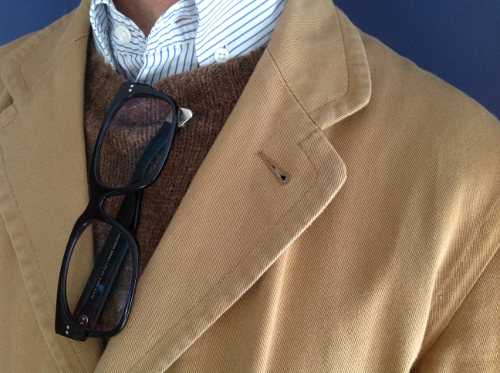Great British Perfumes - Caldey Island Lavender Water
Exciting New Series & New Guest Contributor
Welcome to the first of our exciting new series Great British Perfumes. The series has been put together by our special guest contributor Lawrence Roullier White of famed London emporium Roullier White.
What Lawrence doesn't know about perfume could be written on the label of a tiny scent bottle, and still leave room for the list of ingredients and barcode.
In this series Lawrence will describe Great British perfumes, with some firmly established classics and some destined to be. First up is Caldey Island Lavender Water.
A little ripple of applause please, gentlemen, as Lawrence takes to the lectern. Dim the lights please Mrs T.
Caldey Island Lavender Water
A traditional lavender water is an indispensible part of any fragrance wardrobe. The cool, cologne-like qualities are soothing after a shave, refreshing if you are rushing around and, given the calming properties of the plant, are ideal if you are winding down, trying to relax on a flight or hold it together in the board room. However, it is surprising that good lavenders are hard to find.
If we were to say that a fragrance described as the best of its kind in the world, by one of the most respected international perfume authorities, is made by Trappist monks on an island 2 miles off the coast of Tenby, you would be forgiven for thinking the Tweed Pig had lost the plot. As unlikely as it may sound the monks of Caldey Island, in Pembrokeshire, really do produce one of the most extraordinary lavender scents known to man, as ratified by Luca Turin, who waxes lyrical (‘It reminds me of Vermeer's use of the precious pigment ultramarine, made from lapis lazuli and traditionally reserved for the Virgin Mary's robe, on the apron of a servant pouring milk’) over the heavenly joys of Caldey Island Lavender Water in his book, with Tania Sanchez, Perfumes: A Guide.
As early as the 1950s the enterprising monks wanted to offer something to the many day-trippers to their island who invariably left clutching bunches of the sweet-smelling, herbaceous perennial which grows there. What could have turned into a cheap souvenir line was exalted to the extraordinary by the foresight, and acumen, the monks had to engage the services of a professional perfumer. After experimenting in the abbot’s kitchen, it was realised by the fathers that the flora available to them on the island alone could not create a scent with the lasting power they required. Flemish (the monks are from a Belgian order) nose Hugo Collumbien, set about creating a fragrance that reflected the botany of the island but which could be made in a scale that would satisfy the demands of the many visitors. Imported lavender compounds from Sault, in Southern France, are rendered more robust by the addition of the appropriately named exaltolide, a sweet musk once collected from the muskrat but now synthesised, and are blended by hand by monks in the Abbey perfumery.
Turin believes that every fragrance collection should include a lavender and he describes Caldey Island Lavender Water as ‘simply the best lavender soliflore on earth’. High praise indeed.
Lawrence's smelling notes: Caldey Island Lavender has the floral top notes one would expect, but clean and sharp rather than powdery and soapy. The middle is an icy, steely core which dries down to an skin-smelling softness. An elegant, timeless classic.
Looking for New Guest Contributors
Do you have a specialism that you'd like to write on that would help us swell the content of The Tweed Pig? if so, please get in touch. All that we ask is that you know your onions on a topic we cover regularly.








